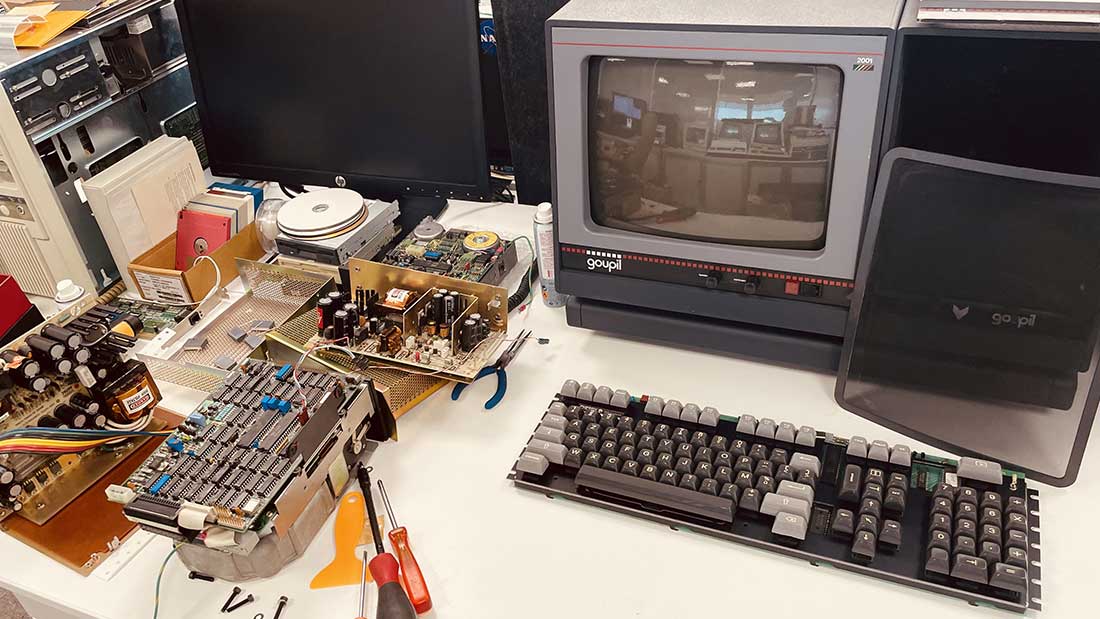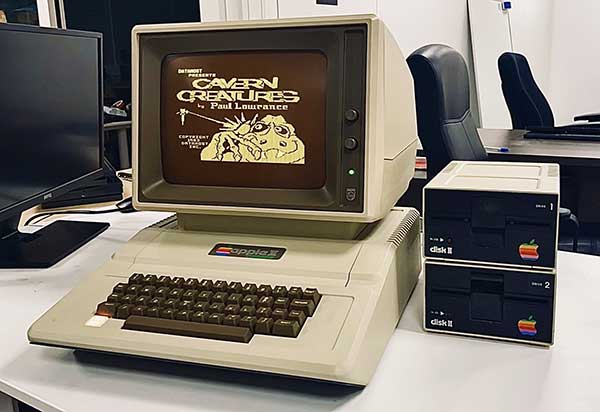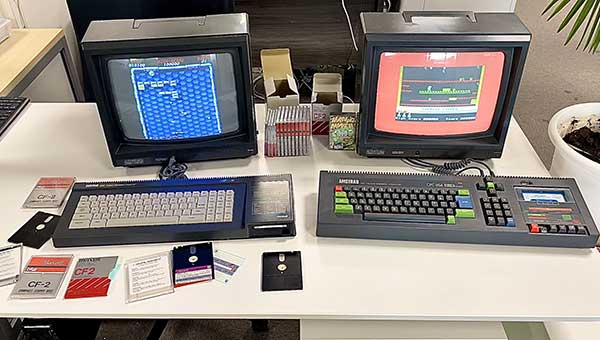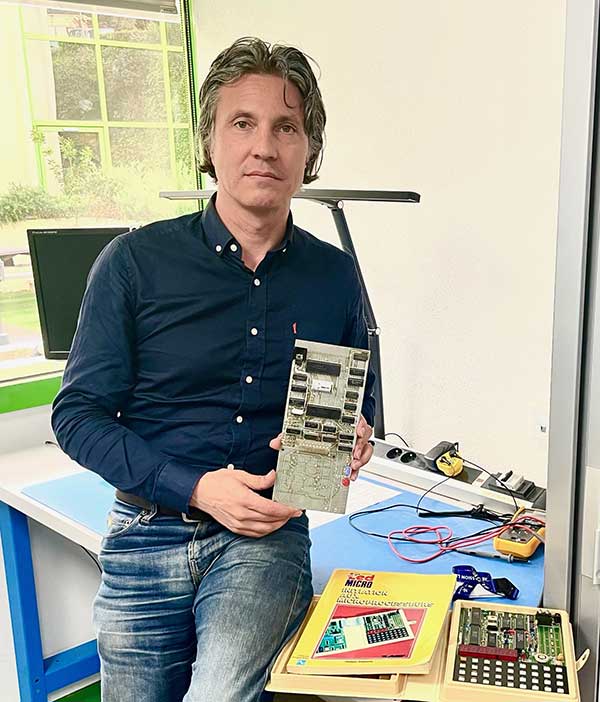
Retrocomputing: A Journey Back to the Future of Computing
Christophe C. is an embedded systems engineer. Over the past 25 years, he has worked for major players in the Sophia Antipolis technopole before joining ELSYS Design at the end of last year. Christophe shares with us his passion for retrocomputing. From restoring old machines to the uncertain future of this community, we discover the motivations, challenges, and hopes that drive him, including his museum project in Sophia Antipolis.
Q: Can you explain to us what retrocomputing is?
Retrocomputing encompasses machines from the pre-PC era up to about 1995, marked by a diversity of architectures, software, and operating systems. It spans from the 1970s to the late 1980s, characterized by a variety of home and professional computers. The transition to Intel’s Pentium symbolizes the decline, with standardization and loss of originality. Each of these machines has a soul; they have all more or less made me dream, and I can’t stand to see them thrown away. Some people get into retrocomputing through retrogaming. This is not the purpose of my approach since my interest focuses on the hardware aspect, architecture, operating system, and the history of these machines. I am not a gamer.
Q: How did your passion for retrocomputing come about?
Regularly, I would see old machines on eBay. At the time, I was getting rid of old computers myself, thinking they were too recent to be classic but not old enough to be valuable. Years later, I regretted these decisions because finding these machines again was difficult, if not impossible. One day, I decided to take the plunge by buying an Apple II on Leboncoin, followed by an Amstrad. A friend told me that owning two machines meant starting a collection, that it was just the beginning for me. That was ten years ago, and he was absolutely right! With eBay and Leboncoin, I managed to acquire around sixty machines, whether home or professional computers, from France, the United States, and England. IBM 5150s, the first Compaq laptops, RS machines, Goupil machines, etc. Paradoxically, the further I progress, the further I go back in time. The machines that interest me today are very rare in France.

Q: What do you do after you’ve retrieved these old machines?
My main goal is to restore them to working order, preserving their original configuration as much as possible, without resorting to modern hardware. In addition to the machines, I carefully store a stock of 400 to 500 original, still sealed floppy disks. My ambition is to go back to the machines of the 1970s, programmable with small switches and booting from punched tapes, in order to preserve the history of computing. I am also in contact with other enthusiasts, such as Christophe N., a former ELSYS Design employee, to create a retrocomputing museum in the Sophia Antipolis region. We want to present the evolution and diversity of machines, then inspire vocations through assembly programming workshops. Thus, establishing a link between the past and the present.
Q: What do you like about retrocomputing? Is it a form of nostalgia?
Yes, that’s exactly it, it’s like a Proustian madeleine. Even the documentation has great value to me: when I recovered PCs, like the first IBM PC, with all the manuals and commercial documents annotated by the previous owner at the time of ordering, it’s a real testimony of the past, very moving. What fascinates me is not just the machine itself but what it represents, the challenges faced by engineering teams, and the way of life of the time. For example, Apple’s first spreadsheet software, a true pioneer. Each machine had its personality and unique characteristics that made it special, like the Exelvision computers designed in Sophia. These machines that aroused admiration, and their history, as well as that of their creators, inspire me tremendously.

Q: What are the main differences between old and modern machines?
The gap is immense; these are two distinct worlds. With old machines, like those using CP/M, an operating system created in 1974, the level of complexity was much lower. You could understand and develop elements such as boot loaders or drivers alone. Today, every element of a computer, peripheral, or software reaches such a level of complexity and functionality that it is almost impossible for a company to have mastery of all subsystems alone. This is the striking difference between old and current machines.
Q: What advice would you give to someone who wants to get into retrocomputing?
I recommend starting with functional machines. Ideally, I try to have three copies: one operational, one in stock, and one for spare parts. For those who want to explore this passion, I recommend choosing a well-documented machine that was widely available at the time, thus facilitating the understanding of hardware and software. The most difficult part is finding specific components from the time, which can take time and financial investment. In summary, focus on a concrete, well-documented project to get the most enjoyment out of it.
Moreover, we have set up a group dedicated to retrocomputing at SHL; we plan to organize evenings soon with some machines that we will study, restore, etc. This can be a good starting point.
Q: How do you see the future of retrocomputing?
This is the question we all ask ourselves in our community. Some young people are also interested in it out of nostalgia, but their interest may decrease as generations progress; the increasing rarity of machines in good condition does not help the situation. It is urgent to centralize collections to avoid their dispersion or abandonment. My fear is that precious collections will end up forgotten or thrown away. We need museums and initiatives to preserve this heritage. A computer museum in Sophia would be a relevant idea to keep the flame alive.
